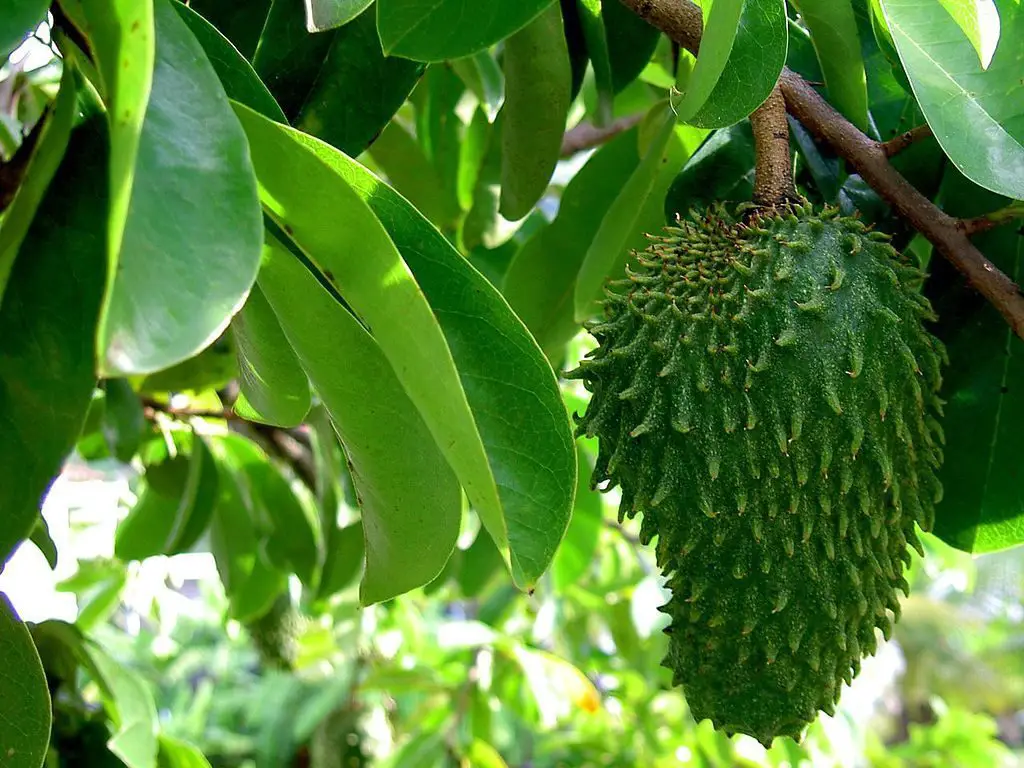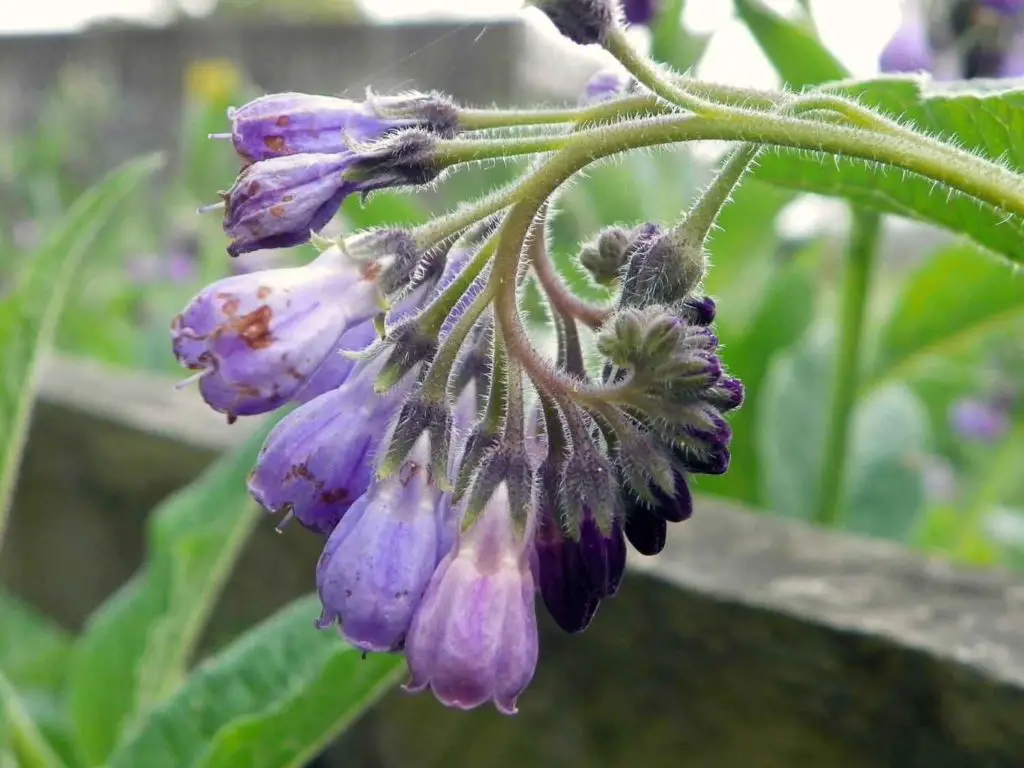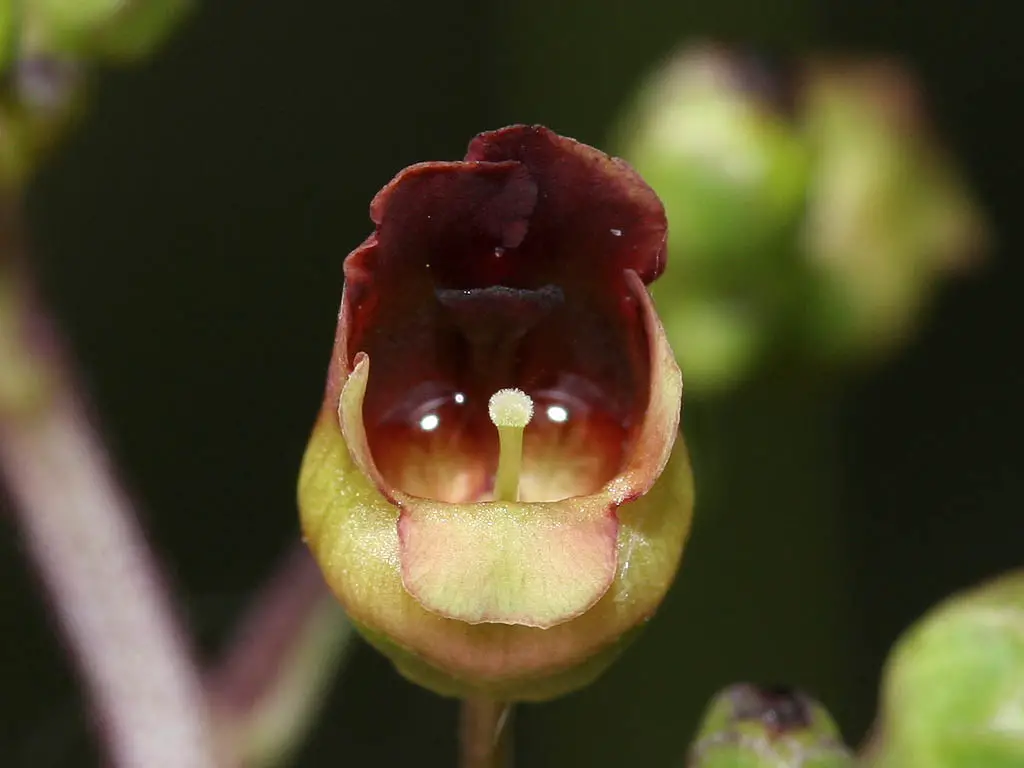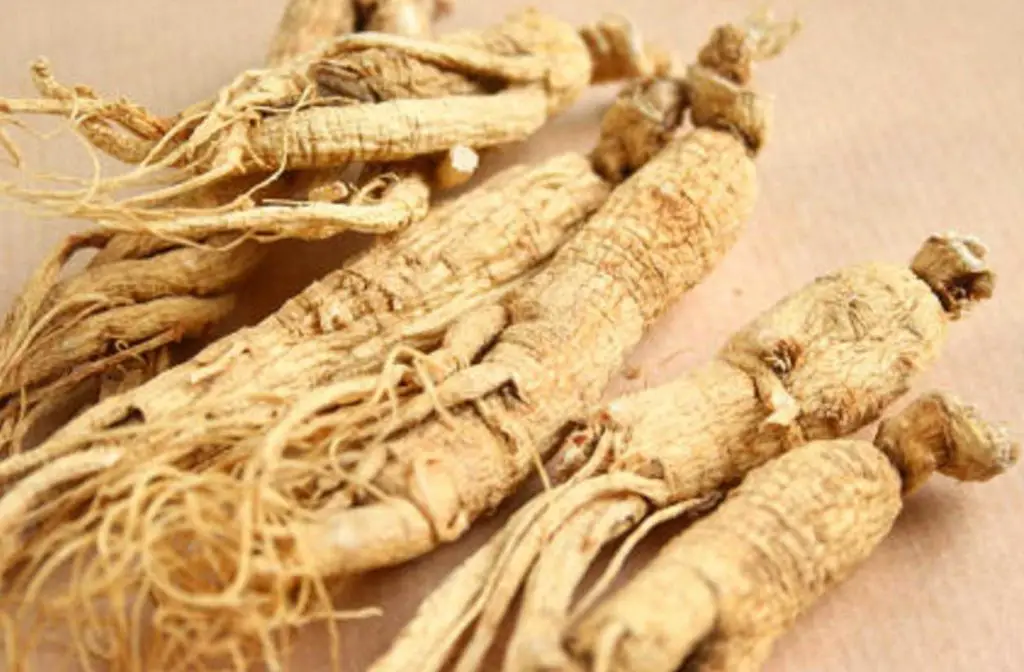What is Guanabana?
Guanabana (Soursop) is an evergreen tree native to Central and South America. It goes by the scientific name of Annona muricata and grows to heights as tall as thirteen feet. It produces leaves that range from eight to sixteen centimeters in length and three centimeters in width. It’s most popularly known as Soursop in English-speaking countries, it is also known as Graviola Guyabano, Paw Paw, Corossol, and Guyabano in Tagalog.
What does Guanabana taste like?
The fruit it bears has a sweet flavor, with a slightly sour tang, similar to that of a strawberry. The flavor has also been described as “pineapple-like” with the creamy texture being compared to that of a coconut or a banana. This sweet flavor has made it a popular ingredient in smoothies, juices, ice creams and other desserts. The fruit grows to be as long as thirty centimeters and the shape of an oval. It is a dark shade of deep green.
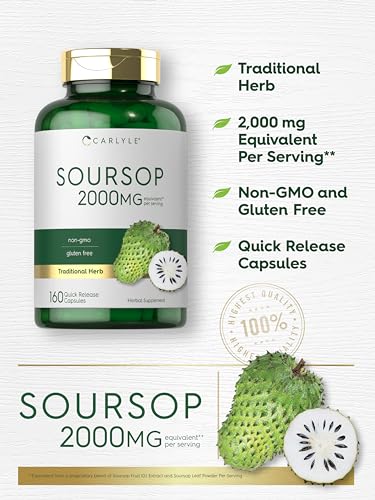
Guanabana Benefits and Uses
Among the potential treatment benefits listed below, nutritionists and herbalists favor Soursop fruit for its beneficial amount of vitamins and minerals. High in necessary vitamins such as vitamin C, B, riboflavin, thiamin and niacin, soursop fruit is a favorite snack among the health conscience. It also contains significant amounts of minerals such as phosphorus and calcium and even contains a small amount of iron (a difficult mineral to ingest for vegans or others who do not partake in consuming either animal products or biproducts).
Cancer
Recently, the potential cancer-fighting benefits of guanabana are being explored. This is because the abundance of phytonutrients present in the constituents of the guanabana tree are believed to serve as antioxidants. Also of note is the potential for anti-cancer activity present in the compounds of guanabana, which form a high rate of acetogenins. Along with general improvement of health, these factors have led nutritionists and scientists to believe that guanabana intake can work to prevent cells that cause various diseases, including specific types of cells that develop into tumors. A study was conducted to assess the effect guanabana tea on cancer cells. In January of 2011, the results were published to show that the tea appeared to prevent cancers of the lungs, colon, ovaries and throat. Although its usage for cancer is primarily preventative, it is also useful in conjunction with conventional cancer treatments. The leaves from the tree have been shown to treat side effects of weakened immunity (as a result of chemotherapy) including skin conditions, ulcers and other related disorders. Studies have shown that guanabana may be effective in treating breast cancer. This is news that has caused much excitement among communities dedicated to finding treatments for breast cancer that are less invasive than chemotherapy, but more research is needed to confirm anything in regards to this. As of yet, no testing has been conducted on humans. One of the main questions that I get asked about Guanabana is if it’s cancer effects are a Hoax or Myth? My answer is, it’s far too early to say. Until there is large scale clinical trials on human’s there is no way it can be considered to be any type of cure. I’d put Guanabana in the same category as something like Green Tea. We’re not entirely sure if it’s a preventative of cancer, but it might be.
Anti-Inflammatory
Various studies conducted worldwide have proven the anti-inflammatory properties of both the juice and the leaves of Guanabana. In particular, a study conducted in Brazil showed data that both the juice of Soursop and the Guanabana leaves greatly reduced inflammation resulting from a snakebite when administered. However, more research is needed in regards to this form of treatment as Soursop juice may be detrimental in other ways, such as aggravating the negative properties of the snake’s venom. Also, of note is the potential for the roots and bark of the Guanabana tree to hold anti-inflammatory properties. Research has been conducted in multiple locations resulting in data showing a strong correlation between the constituents of the Guanabana tree and treatment for inflammation caused by various ailments, most notably arthritis.
Immune Booster
Guanabana has been shown to strengthen the immune system. Researchers believe that this is due to the presence of bioactive compounds that can be found in the fruit in particular. This, along with the high content of vitamin C and vitamin A make Soursop fruit beneficial to strengthening the immune system as reported by a journal released by The University of the West Indies. The report indicated that Soursop fruit was among the various foods that showed stronger resistance to disease. A study conducted in Korea also found the immunity boosting capabilities of extract from the leaf of the Guanabana tree. In the study, the extract was orally administered to rats who showed a lessened incidence rate of edema in their paws than that of the control group. This showed evidence of a strengthened immune system. Testing on humans is needed to further explore the possibilities in this regard.
Pain Relief
Researchers at the U.S. National Library of Medicine believe that the extract of Guanabana carries analgesic properties. An experiment conducted on mice produced data that concurred with this hypothesis.
Fever
Soursop fruit has long been used in folk medicine as a method of treating fever. It is a primary ingredient in a traditional African medicine used to treat seizures and fevers. Its effectiveness in this capacity is believed to be the vulnerability of mosquitoes to the extract. This prevents the spread of dengue fever. It is generally safe for children and a study conducted in India reached a conclusion that it is an effective treatment for dysentery.
Diarrhea
The aforementioned study proving the effectiveness of Guanabana for the treatment of dysentery also resulted in data proving it as a viable treatment option for diarrhea. All parts of the Guanabana tree have shown to be effective for this purpose.

Hypertension
The use of Soursop fruit for alleviating the symptoms of hypertension has been a long-established tradition in folk medicine. Researchers and scientists who conducted a study in Nigeria believe that the phenols present in the fruit are responsible for this. According to the resulting data from a study conducted on human adults in Indonesia, the nutrients contained in the fruit contribute to a low blood pressure.
Anti-Rheumatic
Studies have shown that both the leaves and the fruit of the Guanabana have shown to be anti-rheumatic. This has been a staple treatment in Africa for generations and multiple online testimonies cite the effectiveness of both a decoction containing the leaves and topical applications of the unripe fruit for treating aches and swelling associated with rheumatism.
Eye Health
Consumption of Soursop fruit is believed to be beneficial in the prevention of macular degeneration that occurs as a result of aging, as well as decreasing the risk of various diseases of the eye. This is due to the aforementioned presence of antioxidants and rich abundance of vitamins such as vitamin E, C, zinc, and especially beta-carotene that have been proven to be beneficial in eye health.
Infections
One of the oldest uses for the leaves of the Guanabana tree is for the treatment of infections. They are said to have anti-microbial properties, thus making them an ideal natural alternative for killing parasites and bacteria. This is particularly true of infections caused by parasites passed along by sand fleas (also known as leishmaniasis). Further research is needed to verify the exact effectiveness of Guanabana leaves in this capacity, but many people swear by it as an alternative to synthetic anti-bacterial treatments.
Diabetes
A study conducted in Nigeria suggests that Guanabana leaves may possess qualities that could assist in maintaining blood glucose levels for those suffering from diabetes. The rats dosed with Guanabana showed a lower concentration of blood glucose than the control group. It is believed that this is due the antioxidant properties of the leaves. Researchers speculate that the extract of Guanabana leaves can inhibit, or even outright prevent hepatic oxidation impairment the disease inflicts.
Liver
Guanabana is believed to be effective in treating liver ailments, including liver cancer. This hypothesis was confirmed in a Malaysian study where rats and later, humans were treated were found to react safely to the extract of Guanabana, while their ailments were treated. This was further confirmed in a study conducted in India, where the acetogenins in the fruit appeared to kill cancer cells found in the liver.
Respiratory
It is believed that the leaves of the Guanabana tree can be effective in treating respiratory conditions when used in conjunction with traditional treatments. A study conducted in Nigeria found it to be effective in this manner, particularly in the treatment of asthma.
Stress
Those who are looking for natural alternatives to treat anxiety and depression are finding strong possibilities with Guanabana. The University of Connecticut reported a strong correlation between the treatment of anxiety, stress and depression with the intake of Guanabana. Due to these qualities some herbalists classify Guanabana as an Adaptogen.
Skin Ailments
Guanabana has been more recently utilized as an ingredient in various treatments and cosmetics. Skin tonics used for cleaning and toning the skin contain oil derived from the seeds. The U.S. National Library of Medicine recently reported that the oil extracted from guanabana leaves has been shown to be effective in treating papilloma of the skin.
Digestion
Soursop fruit has been shown to kill parasites that breed in the digestive tract, combat anemia with its slight iron content and treat ulcers that plague the stomach and digestive tract. A study conducted in Brazil showed that the extract of the Guanabana leaf also has anti-parasitic qualities, when it was tested on sheep, proving that it is a naturally occurring anthelmintic.

Guanabana Side Effects, Toxicity, Interactions and Safety
Caution is advised when consuming any part of the Guanabana tree. The bark and the seeds have the potential to contain toxic compounds such as muricine, anonaine and hydrocyanic acid. These compounds have been known to cause inflammation of the eyes. Clinical trials show that consumption of Soursop fruit has been linked with extreme and sudden loss of weight in both mice and humans. It is recommended that anyone with conditions linked directly to loss of body-weight should consult a physician before consuming medicinal amounts of Guanabana. Pregnant and breastfeeding women are advised against eating Soursop fruit as the cells unique to a developing fetus have been known to trigger the toxic activity of the fruit. Finally, caution is advised as links have been made between the consumption of Soursop and the development of degenerative diseases such as Parkinson’s. However, this is specifically associated with consumption of the seeds.
Gaunabana Dosage
As previously stated, the link between excessive consumption of Soursop fruit and the potential for degenerative diseases is a concern. However, many individuals who have consumed the fruit regularly since childhood, have experienced no adverse effects. It is advised that common sense is employed and that consumers consume the fruit no more than they would any other food. For extra precaution, avoiding the seeds may be helpful as well.
For Guanabana tea no more than a cup per day is necessary. The standard dosage for extracts vary based on the extract percentage of each product, it’s best to follow the manufacturers recommendation. For powder and capsules, the standard dosage is two daily increments of thirteen hundred milligrams.
Guanabana Extracts
Extracts and capsules of Guanabana are recommended for treatment of pain and inflammation. As this is the riskiest form of treatment, it is recommended that one consult a doctor before adding Guanabana extract or capsules to their daily supplement schedule.
Buying Guanabana
Guanabana is made available in a variety of forms. Most notably, the juice (in all likelihood sold as Soursop juice) is available for purchase in most grocery stores or locations where fruit juices are sold. When purchasing the juice, be sure to look at the label on the packaging to ensure that a sizable percentage is the actual juice from the fruit rather than replacement fruit, water or sugars that would in any way dilute the actual benefits.
Where can I buy Guanabana?
Supplements can be purchased online or at any stores that specialize in natural alternative medicine. As with the juice, be sure about the content of the extract, capsule or tea. Some supplements may contain additives that dilute the healing properties. In the case of teas, purchasing loose, dried, Guanabana leaves is best to ensure the purity of consumption.
Finally, when purchasing Soursop fruit, there are a variety of factors to consider to ensure an ideal purchase. It is best to purchase Soursop fruit at an open market or produce vendor of some kind. This allows the buyer to inspect the fruit before purchasing it. When buying Soursop fruit, it is best to look at the coloring and texture. Dark green skin indicates ripeness and a healthy number of fleshy spines on the skin of the fruit is a sign of quality. Check for blemishes or bruises on the skin, as they could be signs of less than ideal flesh. If the fruit is not quite ripe, it can be stored at a room temperature. If the fruit is ripe, it can be stored in the refrigerator for as long as two days.
How to Eat Guanabana?
There is no shortage of recipes utilizing Soursop fruit. The most popular method to eat the fruit is to cut it in half and consume with a spoon. The nectar or the pulp can be utilized to make desserts such as milkshakes, ice creams, and sweet beverages. This method of consumption is most popular for ingestion for obvious reasons and for harnessing the vitamins and minerals present in the fruit.
How to Juice Guanabana?
To juice Soursop, scoop the pulp from the skin and be sure to remove the seeds before sending it through the juicer.
How to Prepare Guanabana Tea?
The most popular use of Guanabana leaves is making a tea. This is recommended as a supplement to treat more serious ailments such as respiratory illnesses such as asthma, anxiety, depression and rheumatism. To prepare the tea, take two or three young Guanabana leaves, tear them into small pieces and soak them in one and a half cups of boiling water for thirty minutes. The water temperature should be 170F or 71C in order to not burn the leaves.
Cherimoya vs. Guanabana / Soursop
Cherimoya, also known as Annona Chermola is a close relative of Guanabana. Both produce similar looking fruit with white pulp and black seeds that should not be ingested. However, the descriptions of each respective fruit differ. Soursop has a flavor that is described as being similar to strawberries and pineapple, Cherimoya has been likened to lemons and pears. The leaves of the trees can also be distinguished, the Guanabana tree has glossy, smooth leaves, while the Cherimoya has ribbed leaves. The Cherimoya tree will thrive in Mediterranean weather, Guanabana requires a more tropical climate. Also, unlike Guanabana, Cherimoya has very few accounts of its potential healing properties. They may appear similar but Cherimoya is most definitely inferior.

References:
https://www.ncbi.nlm.nih.gov/pubmed/24337133
https://www.ncbi.nlm.nih.gov/pmc/articles/PMC4319340/
https://www.ncbi.nlm.nih.gov/pmc/articles/PMC4519917/
https://www.ncbi.nlm.nih.gov/pubmed/23889049
https://www.ncbi.nlm.nih.gov/pmc/articles/PMC3371140/
http://journals.plos.org/plosone/article?id=10.1371/journal.pone.0122288
https://www.ncbi.nlm.nih.gov/pmc/articles/PMC4997662/

